A Real-Time Simulink Interfaced Fast-Charging Methodology of Lithium-Ion Batteries under Temperature Feedback with Fuzzy Logic Control
Abstract
:1. Introduction
2. Theory
2.1. Background of Fuzzy Logic for the Lithium-Ion Battery
2.2. Fuzzy Logic Controller Design
- Step 1: The true value of is calculated from the ith input value of the membership function for x and from the jth input value of the membership function for y:
- Step 2: Using and each rule for the kth membership output function, the fuzzy output value is:
- Step 3: The fuzzy set for output z is
- Step 4: The charging current of the battery (Icharge), using the center of gravity method and defuzzification process is expressed as follows:
2.3. Temperature Control Unit
3. Experimental Setup
4. Results and Discussion
5. Conclusions
Author Contributions
Acknowledgments
Conflicts of Interest
References
- Hannan, M.; Azidin, F.; Mohamed, A. Hybrid electric vehicles and their challenges: A review. Renew. Sustain. Energy Rev. 2014, 29, 135–150. [Google Scholar] [CrossRef]
- Budzianowski, W.M. Negative carbon intensity of renewable energy technologies involving biomass or carbon dioxide as inputs. Renew. Sustain. Energy Rev. 2012, 16, 6507–6521. [Google Scholar] [CrossRef]
- Sulaiman, N.; Hannan, M.; Mohamed, A.; Majlan, E.; Daud, W.W. A review on energy management system for fuel cell hybrid electric vehicle: Issues and challenges. Renew. Sustain. Energy Rev. 2015, 52, 802–814. [Google Scholar] [CrossRef]
- Poullikkas, A. Sustainable options for electric vehicle technologies. Renew. Sustain. Energy Rev. 2015, 41, 1277–1287. [Google Scholar] [CrossRef]
- Hofmann, J.; Guan, D.; Chalvatzis, K.; Huo, H. Assessment of electrical vehicles as a successful driver for reducing CO2 emissions in china. Appl. Energy 2016, 184, 995–1003. [Google Scholar] [CrossRef] [Green Version]
- Casals, L.C.; Martinez-Laserna, E.; García, B.A.; Nieto, N. Sustainability analysis of the electric vehicle use in europe for CO2 emissions reduction. J. Clean. Prod. 2016, 127, 425–437. [Google Scholar] [CrossRef]
- Abdul-Manan, A.F. Uncertainty and differences in ghg emissions between electric and conventional gasoline vehicles with implications for transport policy making. Energy Policy 2015, 87, 1–7. [Google Scholar] [CrossRef]
- Sathishkumar, P.; Piao, S.; Khan, M.A.; Kim, D.-H.; Kim, M.-S.; Jeong, D.-K.; Lee, C.; Kim, H.-J. A blended sps-esps control dab-ibdc converter for a standalone solar power system. Energies 2017, 10, 1431. [Google Scholar] [CrossRef]
- Tanaka, N. Technology Roadmap: Electric and Plug-In Hybrid Electric Vehicles; International Energy Agency, Technical Report; International Energy Agency: Paris, France, 2011. [Google Scholar]
- Herrmann, F.; Rothfuss, F. Introduction to hybrid electric vehicles, battery electric vehicles, and off-road electric vehicles. In Advances in Battery Technologies for Electric Vehicles; Elsevier: Cambridge, UK, 2015; pp. 3–16. [Google Scholar]
- Shareef, H.; Islam, M.M.; Mohamed, A. A review of the stage-of-the-art charging technologies, placement methodologies, and impacts of electric vehicles. Renew. Sustain. Energy Rev. 2016, 64, 403–420. [Google Scholar] [CrossRef]
- Yong, J.Y.; Ramachandaramurthy, V.K.; Tan, K.M.; Mithulananthan, N. A review on the state-of-the-art technologies of electric vehicle, its impacts and prospects. Renew. Sustain. Energy Rev. 2015, 49, 365–385. [Google Scholar] [CrossRef]
- Manzetti, S.; Mariasiu, F. Electric vehicle battery technologies: From present state to future systems. Renew. Sustain. Energy Rev. 2015, 51, 1004–1012. [Google Scholar] [CrossRef]
- Saw, L.H.; Ye, Y.; Tay, A.A. Integration issues of lithium-ion battery into electric vehicles battery pack. J. Clean. Prod. 2016, 113, 1032–1045. [Google Scholar] [CrossRef]
- Rao, Z.; Wang, S.; Zhang, G. Simulation and experiment of thermal energy management with phase change material for ageing lifepo4 power battery. Energy Convers. Manag. 2011, 52, 3408–3414. [Google Scholar] [CrossRef]
- Scrosati, B.; Garche, J. Lithium batteries: Status, prospects and future. J. Power Sources 2010, 195, 2419–2430. [Google Scholar] [CrossRef]
- Jugović, D.; Uskoković, D. A review of recent developments in the synthesis procedures of lithium iron phosphate powders. J. Power Sources 2009, 190, 538–544. [Google Scholar] [CrossRef]
- Horiba, T. Lithium-ion battery systems. Proc. IEEE 2014, 102, 939–950. [Google Scholar] [CrossRef]
- Hussein, A.A.-H.; Batarseh, I. A review of charging algorithms for nickel and lithium battery chargers. IEEE Trans. Veh. Technol. 2011, 60, 830–838. [Google Scholar] [CrossRef]
- Tsang, K.; Chan, W. Current sensorless quick charger for lithium-ion batteries. Energy Convers. Manag. 2011, 52, 1593–1595. [Google Scholar] [CrossRef]
- Chen, L.-R. A design of an optimal battery pulse charge system by frequency-varied technique. IEEE Trans. Ind. Electron. 2007, 54, 398–405. [Google Scholar] [CrossRef]
- Vo, T.T.; Chen, X.; Shen, W.; Kapoor, A. New charging strategy for lithium-ion batteries based on the integration of taguchi method and state of charge estimation. J. Power Sources 2015, 273, 413–422. [Google Scholar] [CrossRef]
- Wei, Z.; Meng, S.; Xiong, B.; Ji, D.; Tseng, K.J. Enhanced online model identification and state of charge estimation for lithium-ion battery with a fbcrls based observer. Appl. Energy 2016, 181, 332–341. [Google Scholar] [CrossRef]
- Wei, Z.; Zhao, J.; Ji, D.; Tseng, K.J. A multi-timescale estimator for battery state of charge and capacity dual estimation based on an online identified model. Appl. Energy 2017, 204, 1264–1274. [Google Scholar] [CrossRef]
- Wei, Z.; Zou, C.; Leng, F.; Soong, B.H.; Tseng, K.-J. Online model identification and state-of-charge estimate for lithium-ion battery with a recursive total least squares-based observer. IEEE Trans. Ind. Electron. 2018, 65, 1336–1346. [Google Scholar] [CrossRef]
- Guo, Z.; Liaw, B.Y.; Qiu, X.; Gao, L.; Zhang, C. Optimal charging method for lithium ion batteries using a universal voltage protocol accommodating aging. J. Power Sources 2015, 274, 957–964. [Google Scholar] [CrossRef]
- Zhang, S.; Zhang, C.; Xiong, R.; Zhou, W. Study on the optimal charging strategy for lithium-ion batteries used in electric vehicles. Energies 2014, 7, 6783–6797. [Google Scholar] [CrossRef]
- Liu, Y.-H.; Teng, J.-H.; Lin, Y.-C. Search for an optimal rapid charging pattern for lithium-ion batteries using ant colony system algorithm. IEEE Trans. Ind. Electron. 2005, 52, 1328–1336. [Google Scholar] [CrossRef]
- Huang, J.-W.; Liu, Y.-H.; Wang, S.-C.; Yang, Z.-Z. Fuzzy-Control-Based Five-Step Li-Ion Battery Charger. In Proceedings of the International Conference on Power Electronics and Drive Systems (PEDS 2009), Taipei, Taiwan, 2–5 November 2009; IEEE: Piscataway, NJ, USA, 2009; pp. 1547–1551. [Google Scholar]
- Lee, Y.-S.; Cheng, M.-W. Intelligent control battery equalization for series connected lithium-ion battery strings. IEEE Trans. Ind. Electron. 2005, 52, 1297–1307. [Google Scholar] [CrossRef]
- Ho, Y.-H.; Huang, S.-S.; Liu, Y.-H.; Chiu, Y.-S.; Liu, C.-L. Optimization of a fuzzy-logic-control-based five-stage battery charger using a fuzzy-based taguchi method. Energies 2013, 6, 3528–3547. [Google Scholar]
- Lyn, C.E.; Rahim, N.; Mekhilef, S. Dsp-Based Fuzzy Logic Controller for a Battery Charger. In Proceedings of the 2002 IEEE Region 10 Conference on Computers, Communications, Control and Power Engineering (TENCON’02), Beijing, China, 28–31 October 2002; IEEE: Piscataway, NJ, USA, 2002; pp. 1512–1515. [Google Scholar]
- Hsieh, G.-C.; Chen, L.-R.; Huang, K.-S. Fuzzy-controlled li-ion battery charge system with active state-of-charge controller. IEEE Trans. Ind. Electron. 2001, 48, 585–593. [Google Scholar] [CrossRef]
- Lee, Y.-S.; Cheng, M.-W.; Yang, S.-C. Fuzzy controlled individual cell equalizers for lithium-ion batteries. IEICE Trans. Commun. 2008, 91, 2380–2392. [Google Scholar] [CrossRef]
- Mendel, J.M. Fuzzy logic systems for engineering: A tutorial. Proc. IEEE 1995, 83, 345–377. [Google Scholar] [CrossRef]
- Kickert, W.J.; Mamdani, E.H. Analysis of a fuzzy logic controller. Fuzzy Sets Syst. 1978, 1, 29–44. [Google Scholar] [CrossRef]
- Driankov, D.; Hellendoorn, H.; Reinfrank, M. Introduction. In An Introduction to Fuzzy Control; Springer: Berlin/Heidelberg, Germany, 1996; pp. 1–36. [Google Scholar]
- Dunn, R.; Bell, K.; Daniels, A. Fuzzy logic and its application to power systems. In Proceedings of the IEE Colloquium on Artificial Intelligence Techniques in Power Systems (Digest No: 1997/354), London, UK, 3 November 1997; IET: Washington, DC, USA, 1997; pp. 4/1–4/4. [Google Scholar]
- Samsung SDI Co., Ltd. Specification of Product for Lithium-Ion Rechargeable Cell Model: Icr18650-26f; Samsung SDI Co., Ltd.: Yongin-si, South Korea, 2009. [Google Scholar]
- Díaz, J.; Martin-Ramos, J.A.; Pernía, A.M.; Nuño, F.; Linera, F.F. Intelligent and universal fast charger for ni-cd and ni-mh batteries in portable applications. IEEE Trans. Ind. Electron. 2004, 51, 857–863. [Google Scholar] [CrossRef]
- Saberi, H.; Salmasi, F. Genetic optimization of charging current for lead-acid batteries in hybrid electric vehicles. In Proceedings of the International Conference on Electrical Machines and Systems (ICEMS), Seoul, South Korea, 8–11 October 2007; IEEE: Piscataway, NJ, USA, 2007; pp. 2028–2032. [Google Scholar]
- Chen, L.-R.; Hsu, R.C.; Liu, C.-S. A design of a grey-predicted li-ion battery charge system. IEEE Trans. Ind. Electron. 2008, 55, 3692–3701. [Google Scholar] [CrossRef]






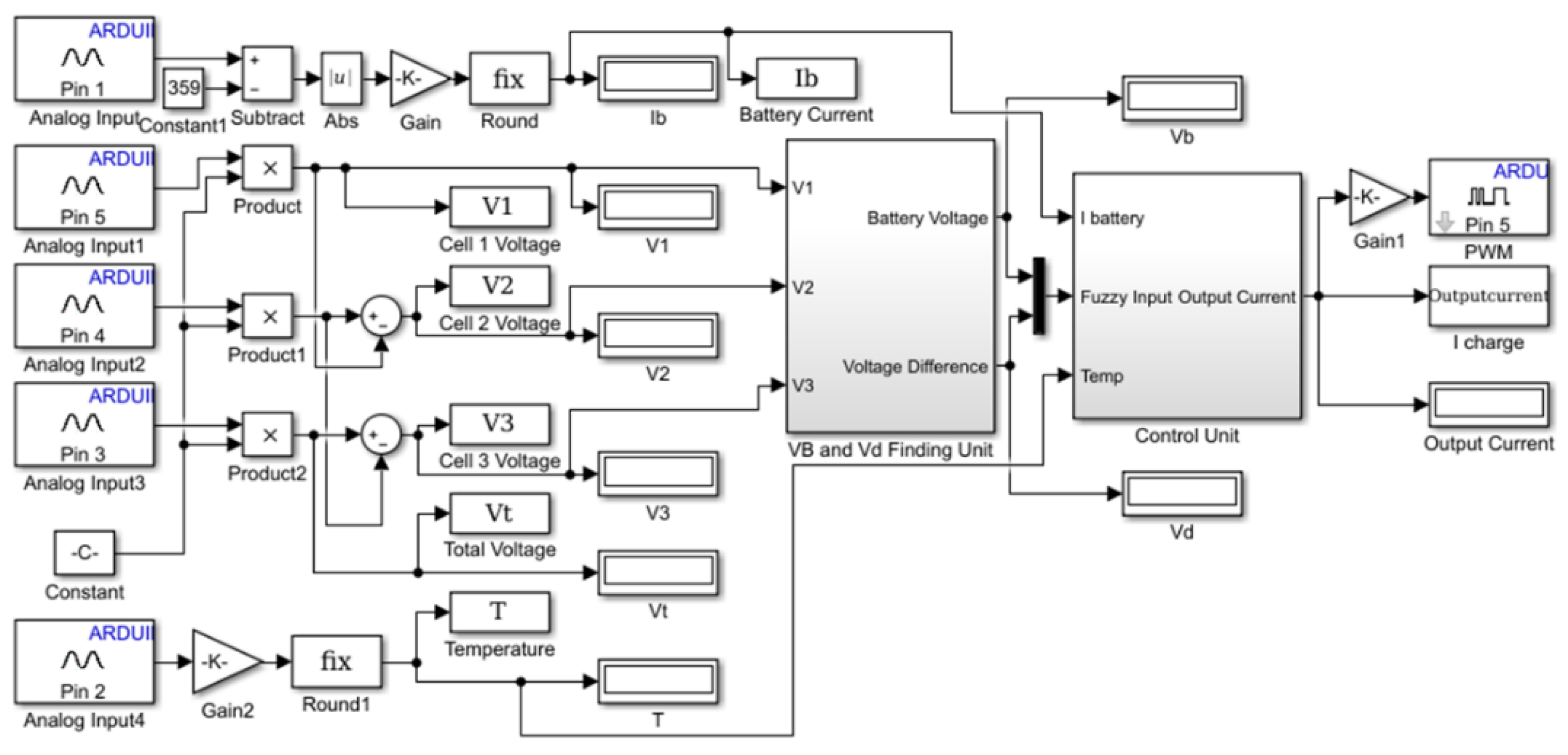
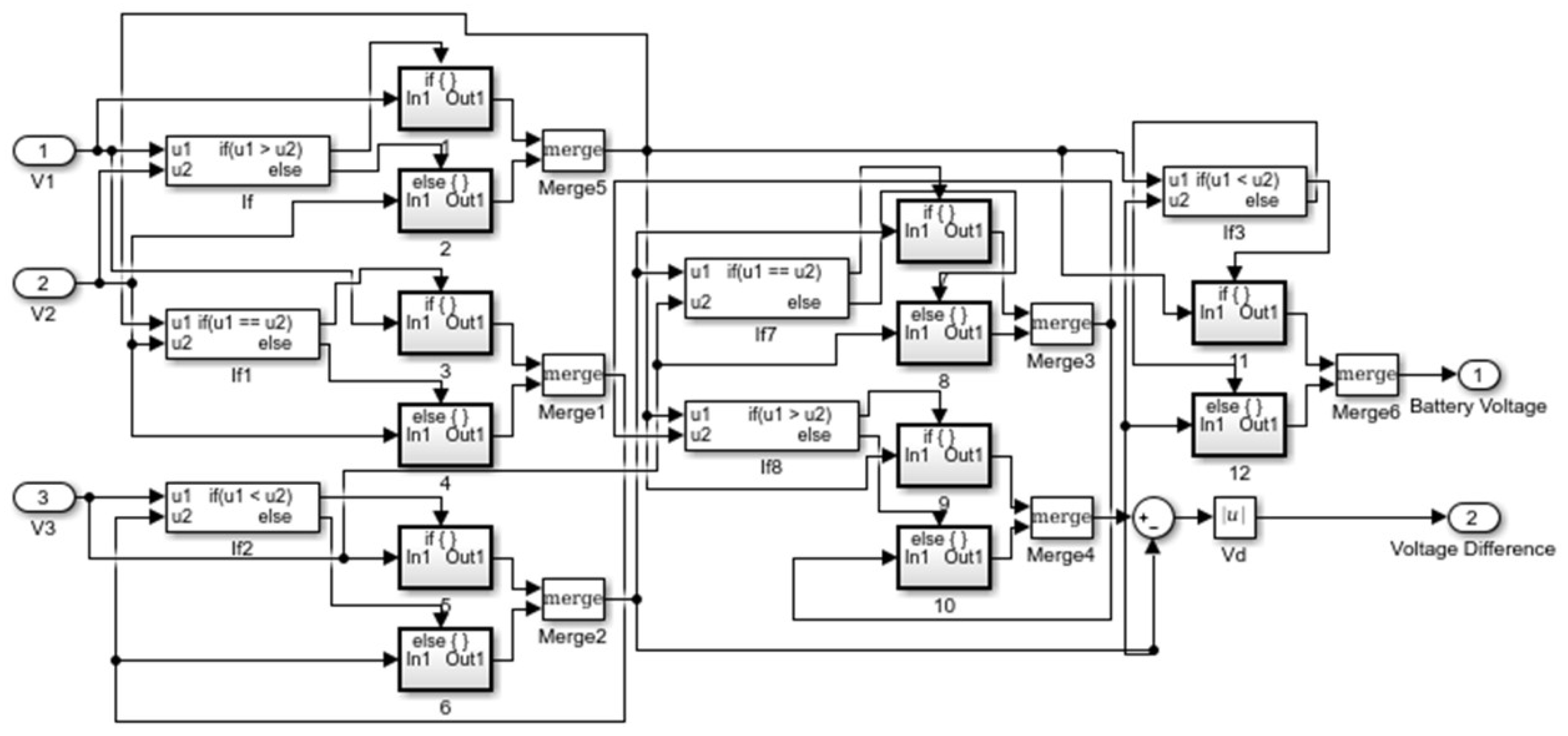
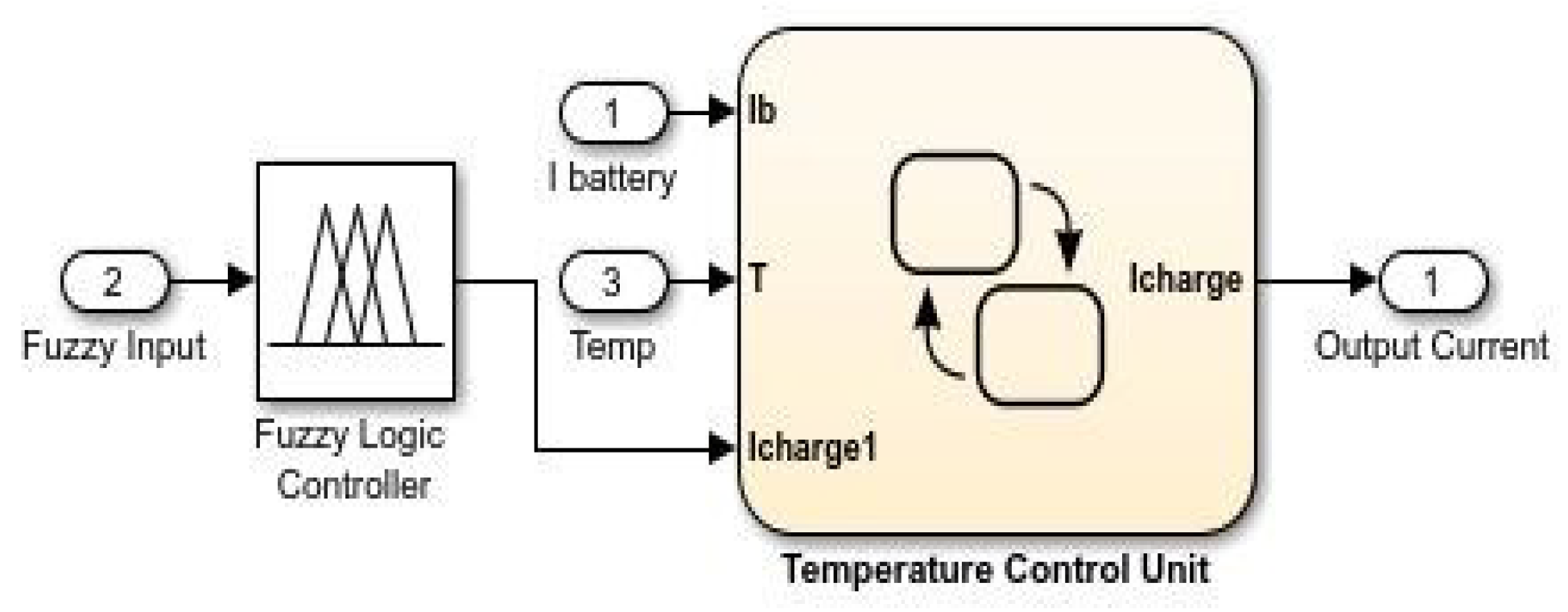
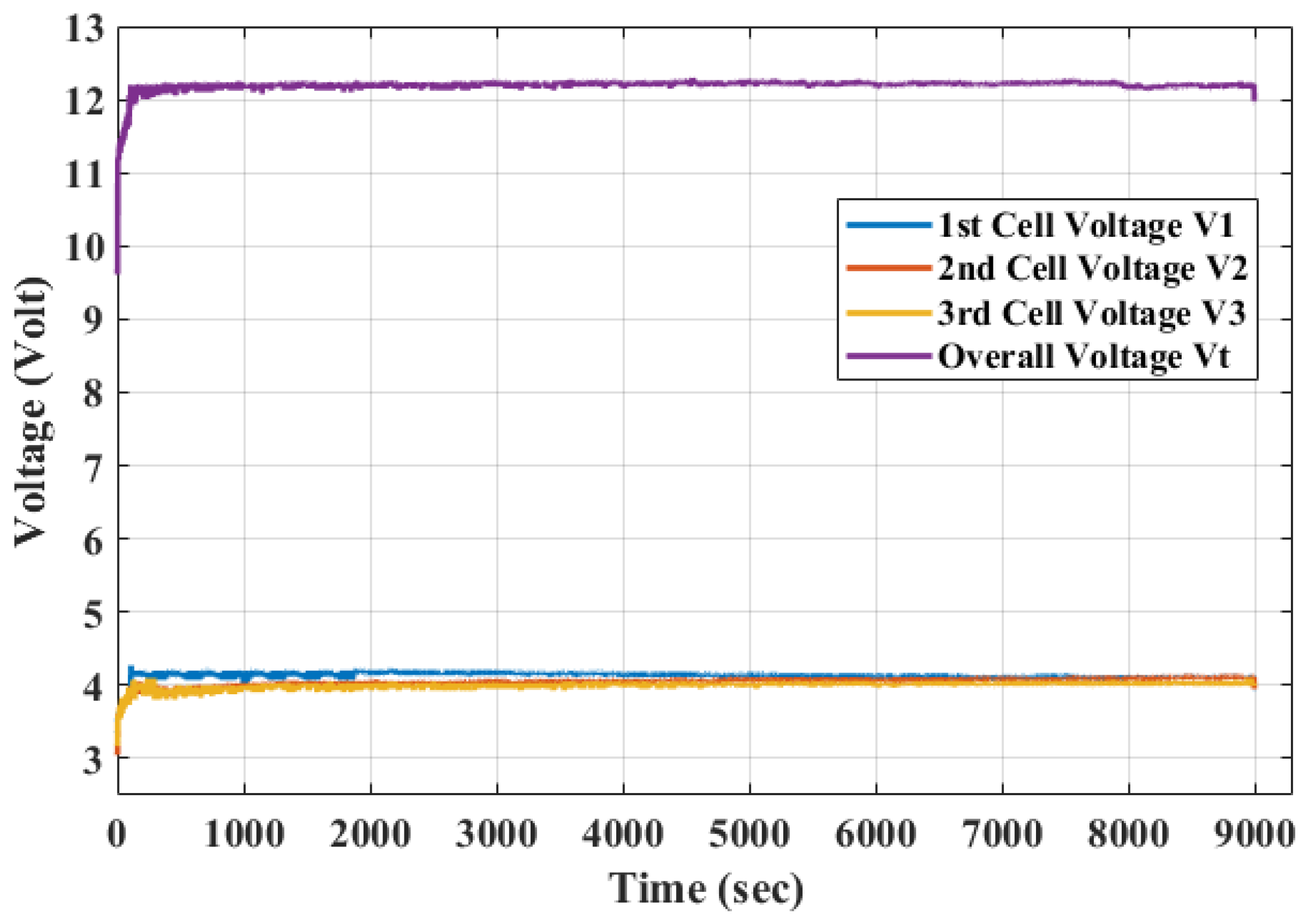
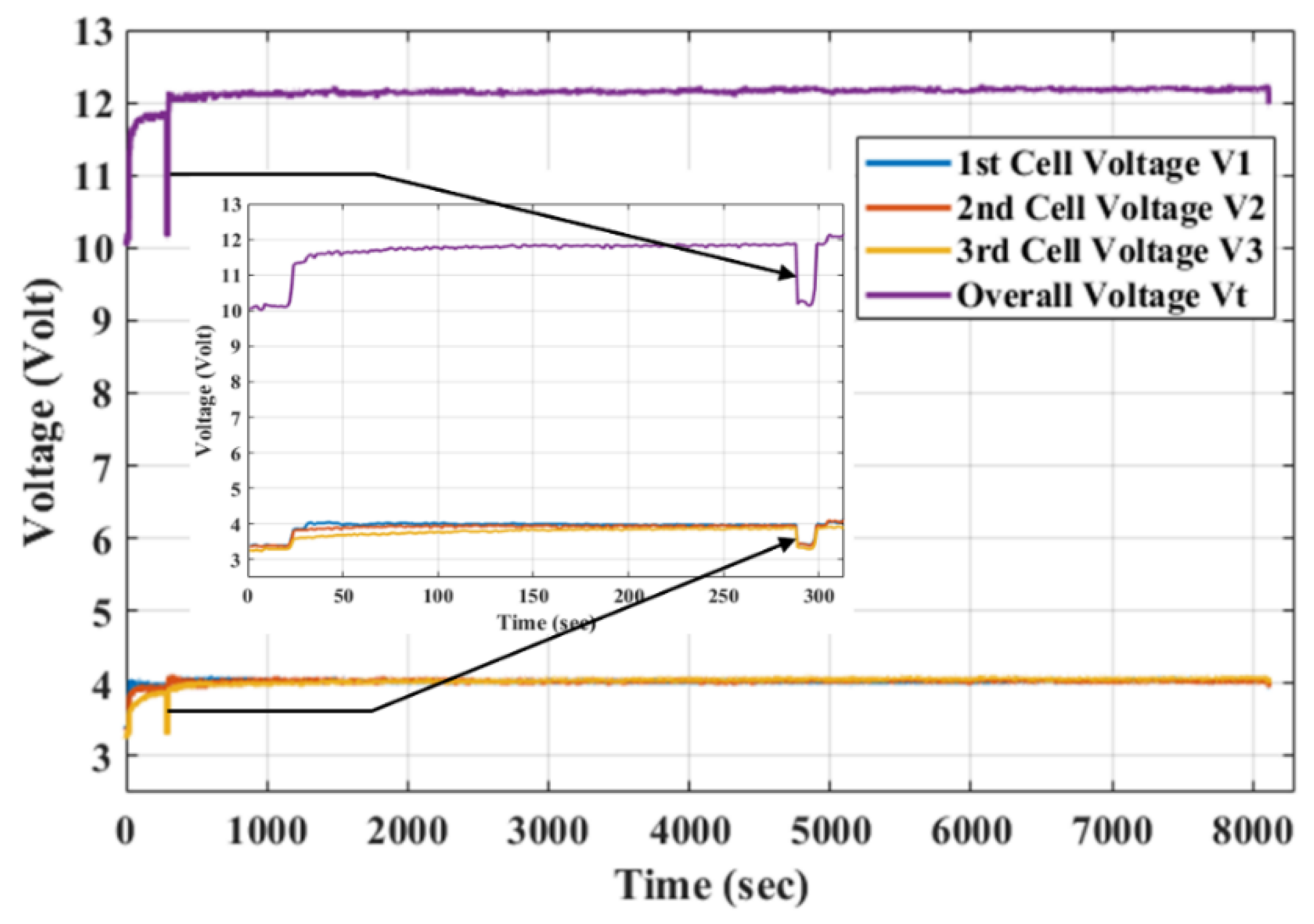

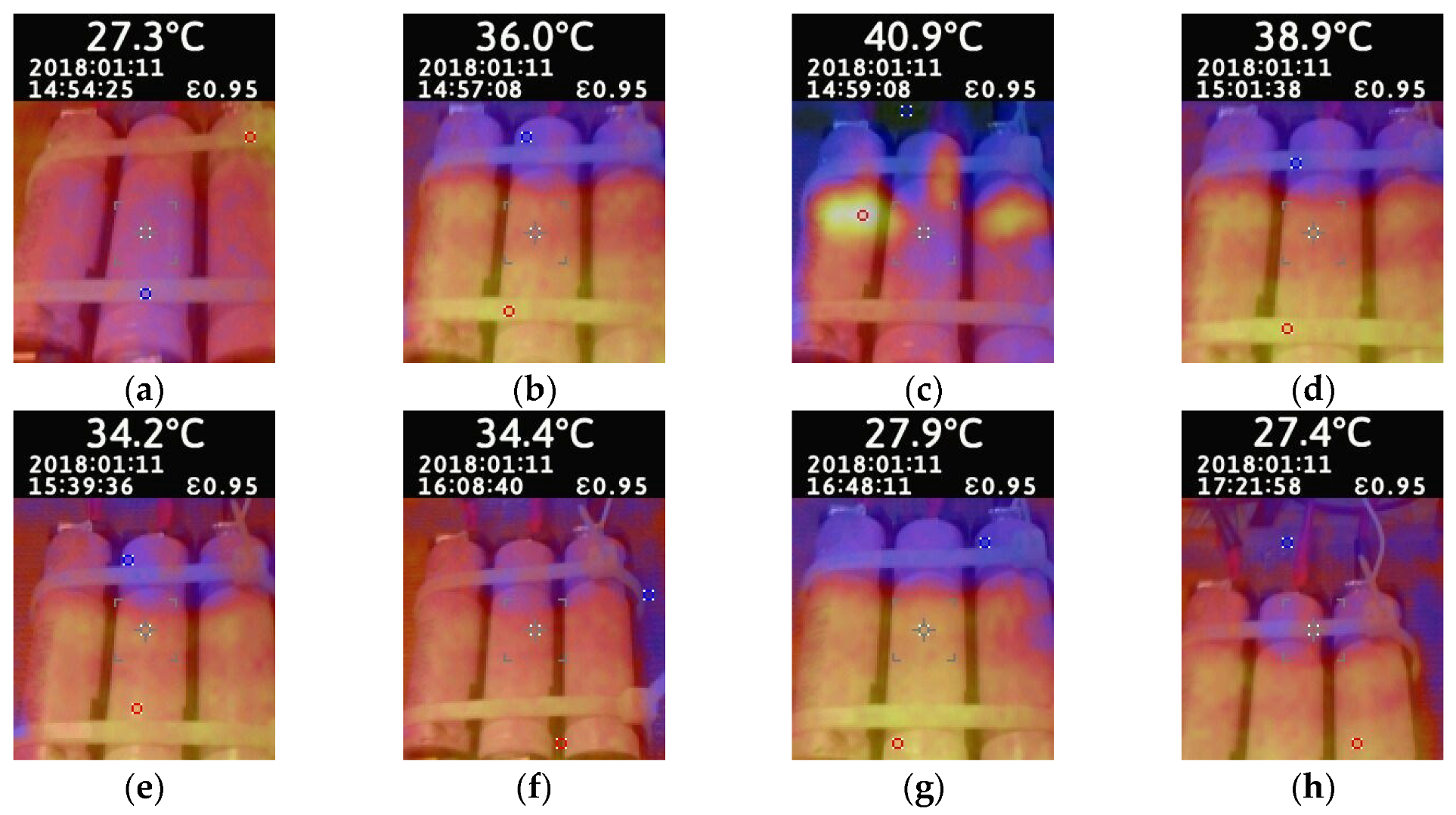


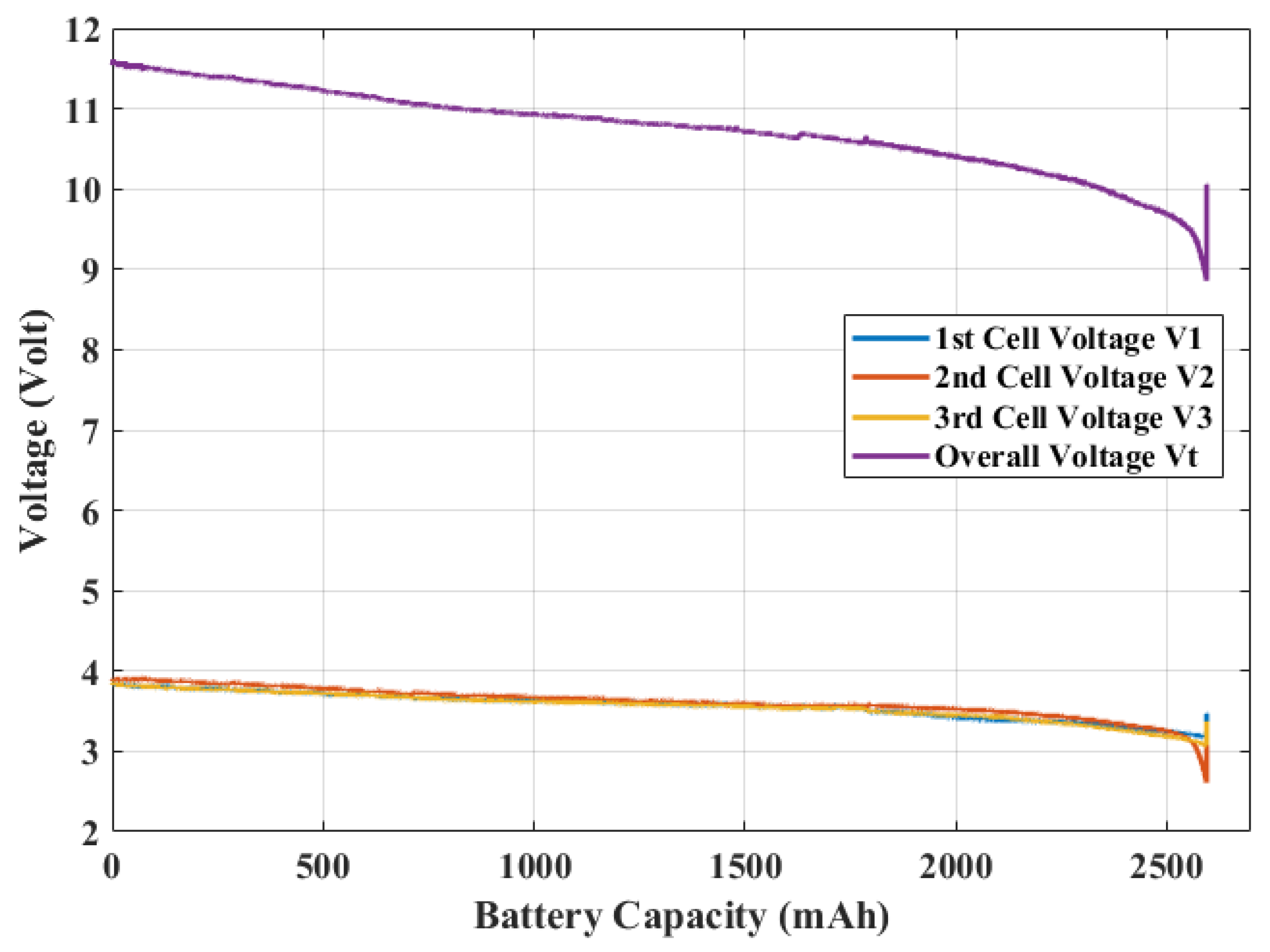


| Voltage Difference, Vd | ||||||
| Cell Voltage, VB | Output | VS | S | M | L | VL |
| VS | VS | M | L | VL | VL | |
| S | VS | M | L | VL | VL | |
| M | VS | M | L | VL | VL | |
| L | VS | S | M | L | VL | |
| VL | VS | S | M | L | VL | |
| Method | Worst Time (s) | Average Time (s) | Best Time (s) | Charging Efficiency (%) |
|---|---|---|---|---|
| Conventional Charging [39] | 9013 | 8983 | 8921 | 98.06 |
| Proposed Technique | 8148 | 8106 | 8056 | 98.11 |
| Improvement | 9.60% | 9.76% | 9.69% | 0.05 |
© 2018 by the authors. Licensee MDPI, Basel, Switzerland. This article is an open access article distributed under the terms and conditions of the Creative Commons Attribution (CC BY) license (http://creativecommons.org/licenses/by/4.0/).
Share and Cite
Umair Ali, M.; Hussain Nengroo, S.; Adil Khan, M.; Zeb, K.; Ahmad Kamran, M.; Kim, H.-J. A Real-Time Simulink Interfaced Fast-Charging Methodology of Lithium-Ion Batteries under Temperature Feedback with Fuzzy Logic Control. Energies 2018, 11, 1122. https://doi.org/10.3390/en11051122
Umair Ali M, Hussain Nengroo S, Adil Khan M, Zeb K, Ahmad Kamran M, Kim H-J. A Real-Time Simulink Interfaced Fast-Charging Methodology of Lithium-Ion Batteries under Temperature Feedback with Fuzzy Logic Control. Energies. 2018; 11(5):1122. https://doi.org/10.3390/en11051122
Chicago/Turabian StyleUmair Ali, Muhammad, Sarvar Hussain Nengroo, Muhamad Adil Khan, Kamran Zeb, Muhammad Ahmad Kamran, and Hee-Je Kim. 2018. "A Real-Time Simulink Interfaced Fast-Charging Methodology of Lithium-Ion Batteries under Temperature Feedback with Fuzzy Logic Control" Energies 11, no. 5: 1122. https://doi.org/10.3390/en11051122
APA StyleUmair Ali, M., Hussain Nengroo, S., Adil Khan, M., Zeb, K., Ahmad Kamran, M., & Kim, H.-J. (2018). A Real-Time Simulink Interfaced Fast-Charging Methodology of Lithium-Ion Batteries under Temperature Feedback with Fuzzy Logic Control. Energies, 11(5), 1122. https://doi.org/10.3390/en11051122








